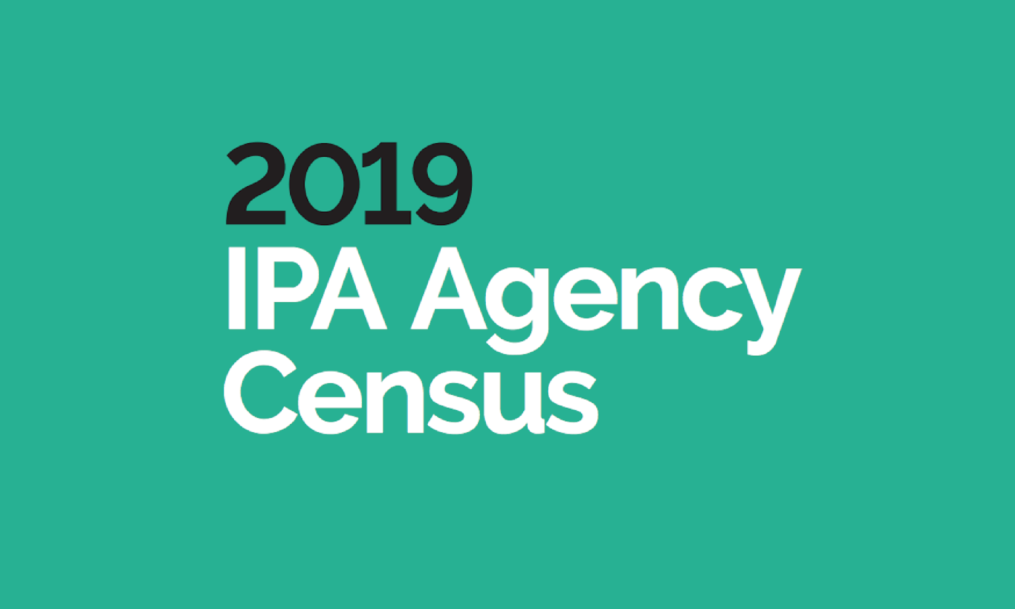Already a member? Sign in below

The IPA has published its annual Agency Census detailing a breakdown of the make-up agencies within IPA membership in 2019.
Overall numbers reveal that, at the time of data collection, the employed base in IPA member agencies in 2019 was 24,866, compared with the 25,142 recorded in 2018. While the number of employees in the media agencies continues to grow, increasing by nearly 400 year-on-year to 11,357, the number of employees at creative and non-media agencies fell by over 600 to 13,509. The decline in overall staff numbers appears to have been mostly caused by a decrease in the use of employees on a fixed-term contract, from 2,127 in 2018 to 969 in 2019.
Further key 2019 Census findings:
Number of females in C-suite positions increased year-on-year
Females accounted for 52.6% of total employees, up slightly from 52.2% year-on-year. When looking at the gender balance by seniority, females occupied 59.5% of junior roles, up from 58% in 2018, and 34% of C-suite roles, up from 32.7% in 2018, and up significantly from 19% in 2002. The percentage of females in a C-suite roles in 2019 was the highest at 39.9% in media agencies with more than 200 employees and at 36.2% in creative and other non-media agencies with fewer than 200 employees.
There was a strong female bias in HR, finance, account management and new business roles, while there was a strong male bias in creative and digital roles.
Females accounted for 85% of the total part-time employed base. This was down from 86.8% in 2018.
A gender pay gap exists
There was an overall average salary gap in favour of males of 24.4% compared to 24.2% in 2018. This stood at 28.1% in creative and other non-media agencies and 19.8% in media agencies, both in favour of males. The salary gap was highest at other executive management level where it stood at 18.9%, and was the lowest at the junior/executive/assistant level at 0.9%.
Ethnic diversity fell fractionally year-on-year
The number of employees from an ethnic minority background sat at 13.7%, down slightly from 13.8% in 2018. Ethnic diversity in IPA members agencies was highest at junior levels at 17.7%, up from 16.9% in 2018, while 4.7% of C-suite roles were occupied by individuals from an ethnic background, down from 5.5% in 2018.
At the highest level of seniority (chair/CEO/MD) ethnic minority representation has doubled from 2% in 2017 to 4.1% in 2019.
Adland continues to be dominated by those at the younger age of the spectrum
44.8% of the employed base at IPA member agencies was aged 30 or under, down from 45.6% in 2018, while 6.3% were aged 50 or over, compared with 6.2% in 2018.
Download the full report here.
Already a member? Sign in below
If your company is already a member, register your email address now to be able to access our exclusive member-only content.
If your company would like to become a member, please visit our Front Foot page for more details.
Enter your email address to receive a link to reset your password
Your password needs to be at least seven characters. Mixing upper and lower case, numbers and symbols like ! " ? $ % ^ & ) will make it stronger.
If your company is already a member, register your account now to be able to access our exclusive member-only content.